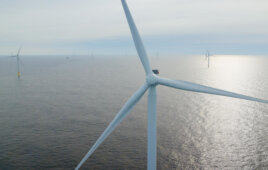Steven Chu, U.S. Department of Energy Secretary, announced that five projects will receive a combined US $20.5 million from the American Recovery and Reinvestment Act to support deployment of community-based renewable energy projects which include biomass, wind and solar installations.
The projects selected by the Department of Energy will be leveraged with approximately $167 million in local government and private industry funding. The Department of Energy estimates that these projects will provide enough clean, renewable energy to displace the emissions of approximately 10,700 homes.
Projects selected for awards are listed below:
The City of Montpelier, Vermont plans to use $8 million from the Department of Energy to install a 41 MMBtu combined heat and power district energy system fueled with locally-sourced renewable and sustainably-harvested wood chips. The CHP system will be sized to provide heating to the Vermont Capitol Complex, city owned schools, the City Hall Complex, and up to 156 buildings in the community’s designated downtown district for a total of 176 buildings and 1.8 million square feet served.
The Forest County Potawatomi Tribe in Wisconsin will install a 1.25-MW biomass combined heat and power facility that will provide heating, cooling and electricity, a 150-kW biogas digester and generation facility, as well as three 100-kW wind turbines and three dual-axis 2.88 kW solar PV panels located at the Tribe’s Governmental Center using $2.5 million from the Department of Energy.
SMUD will recieve $5 million to install the state’s first-ever ‘Solar Highway’, which will feature 300kW of concentrating PV, and 400 and 800 kW of flat plate PV distributed on 2 miles of highway right-of-ways. SMUD will also install a full scale co-digestion process of fats, oil and grease (FOG) and liquid food processing waste with sewage to produce biogas with estimated power recovery of 1-3 MW, and install two low-NOx anaerobic digesters fed by two dairy facilities that will produce 500 kW of combined heat and power, and generate 600 kW of electricity through a molten carbonate fuel cell.
UC Davis’ proposed Waste-to-Renewable Energy (WTRE) system will get $2.5 million. The system would generate power from a renewable biogas fed fuel cell. The organic waste will enter a receiving station in which it can be collected and prepared for digestion. Once the appropriate mix has been created in buffer tanks, the waste will flow to the reactor where methanogenic bacteria will generate methane and carbon dioxide, hydrogen sulfide, etc.
Finally, Phillips County, Colorado will get $2.5 million to help develop a 650-MW wind farm within Sedgwick, Phillips, and Logan counties in Northeastern Colorado.
Filed Under: Policy, Projects




